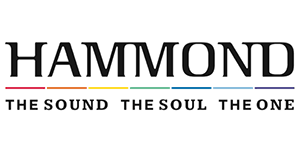
Hammond electric musical products, which became one of the most popular and famous brands in USA, began to appear in 1935 as the first industrial keyboard instrument – Hammond organ. It was positioned as a more affordable alternative to church organs and as an instrument for playing music at home. The brand got its name owing to its founder Laurens Hammond - an American engineer and inventor. In addition to his most famous invention - an electric organ, Hammond became the creator of Hammond Clock, as well as Novachord, the first polyphonic synthesizer.
However, the inventive activity of the creator of the legendary synthesizer didn’t begin with musical instruments: first Laurens Hammond was the chief engineer in Gray Motor Company, which produced ship engines, then his invention of the Teleview system (the first prototype of glasses for 3D movies) appeared, then Hammond founded his company producing watches (Hammond Clock Company) and, finally - electronic musical instruments.
The first model of the electro organ, called "A", was developed in 1934 and presented at an exhibition in Chicago in 1935. The organ gained wide popularity thanks to its small size. The sound of the instrument was generated using a Tonewheel electromechanical generator, recognized as the best generator of musical sound of the time. The sound of the organ was produced by a rotating shaft with discs (91 tone-discs). Each tone-disc had its own rotation speed and was driven by an electric motor which gave stability to the musical structure. This method of sound synthesizing marked the instrument as an outstanding unit and distinguished it from its competitors, taking it to the first positions. The revolutionary synthesis of Hammond organ was the additive sound synthesis, which is still used in most analog synthesizers. The essence of this synthesis is in the creation of a timbre by merging sine waveforms, allowing you to add up to eight additional overtones to the basic tone.
A100 series (1959) differed from the previous A series in full-size organs with a 61-note keybed. However, this series gained its popularity mainly in churches and gospel genre.
The second wave of Hammond’s popularity was during the creation of the first polyphonic synthesizer Novachord in 1939. The instrument synthesized the voices of such musical instruments as piano, harpsichord, wind instruments, as well as its own original sounds, had a 72-voice polyphony. Novachord innovation was in the addition of new effects of reverb, vibrato, chorus. The sound of the instrument was modified by the first ever ADSR envelope generators.
In the 40s, the brand introduced a new Leslie technology which received its name thanks to the engineer Donald Leslie, who was working at the time at Hammond company. To achieve the amplitude-frequency modulation, the engineer advocated the tremolo effect replacement. The development of Leslie made it possible to create the most typical "trembling" sound with a complex spatial coloration, an intrinsic character of all the brand’s instruments. Then M series portable models and more affordable versions - L series models were developed. These instruments had a 44-note keybed.
In 1954 B series electric organs were released receiving the highest ratings. The release of the next C series embraced all the functions of B models, differing only in looks. Electric organ B has a unique drawbar system constituting a part of the additive synthesis system. The timbre palette was built by blending the fundamental tone with its harmonics (up to eight). The organ had a 61-note keyboard, and there was also a 25-key pedalboard. Later B-3 series included percussion sound with an added sharp attack shaping its timbre. This supplement has become a brand feature of Hammond.
T-series models (1968) were the last ones sporting a hardware version of the Tonewheel technology. Instruments included the effects of B-series models, Leslie speakers. The latest model, T-500, also included a built-in cassette tape recorder.
After the death of Hammond’s founder, the brand was placed under the auspices of the Suzuki Musical Instrument Corporation in 1989, whose founder was a big fan of Hammond's products. New series of portable synthesizers came out: Hammond XK-5, SK (series stage keyboards) and XK (featuring functions close to those inherent in B series), reviving the advanced technology of Laurens Hammond - Tonewheel, or rather its software emulation. All new electric organs by Hammond have a MIDI controller, which, of course, expands the scope of their use.
Hammond is represented with the instruments which have always been a part of the recording industry since the very beginning of the era of electronic musical instruments. The brand's products are full-fledged all-purpose instruments with outstanding specification and advanced functions. Many rock musicians prefer the brand's products for its unique sound, while the widely popular modern brands Native Instruments, Korg, Clavia Nord, Roland rely on the inventions of Laurens Hammond.

